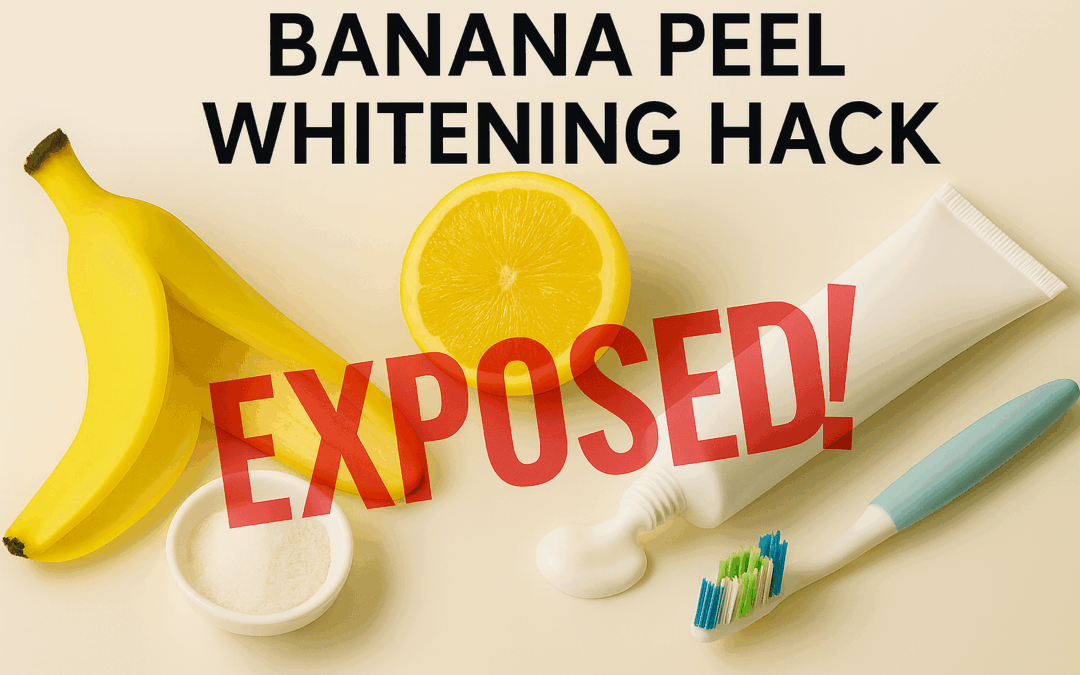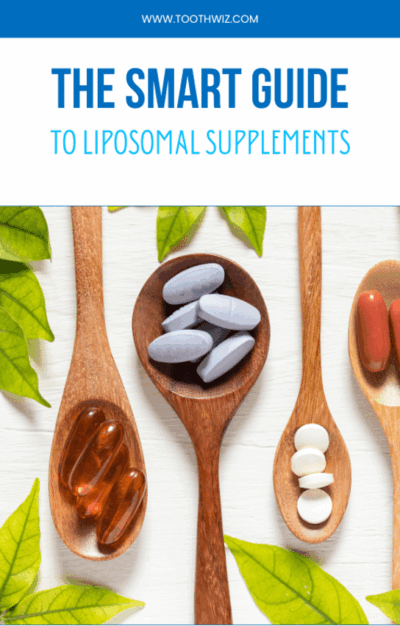
Banana Peel Whitening Hack: And Why Your Dentist Doesn’t Need a Yacht
Banana peel whitening hack videos seem to be everywhere—but this one might actually damage your teeth. Let’s look at what really happens when you mix banana peel, lemon, salt, and toothpaste together.
The banana peel whitening hack is one of those viral “natural” tricks that looks clever in a short video—until you understand what’s really happening to your enamel. The recipe is simple: scrape the inside of a banana peel, mix in a little lemon juice, salt, and toothpaste, then brush. The post I saw even promised you’ll “get results without paying for your dentist’s yacht.”
As a dentist—and for the record, a completely yacht-free one—I felt compelled to step in. Let’s explore what this banana peel teeth whitening hack actually does, why it’s risky, and what science-backed methods will give you a brighter, healthier smile instead.
Why This Banana Peel Hack Seems to Work
At first glance, the banana peel whitening hack sounds almost logical. Bananas contain minerals like potassium and magnesium. Lemons have natural acids that “clean.” Salt is a traditional scrubber, and toothpaste is already in everyone’s bathroom. Mix them all together and you might think you’ve invented the ultimate natural whitener. Unfortunately, chemistry disagrees.
Lemon juice is extremely acidic—around pH 2 to 3, similar to vinegar or soda. Enamel starts dissolving at a pH below 5.5. That means the lemon juice doesn’t just lift stains; it actually begins dissolving the mineral structure of your teeth. Once enamel softens, even gentle brushing causes surface loss. Add salt and toothpaste—both mildly abrasive—and you’re effectively sanding your enamel smooth.
So yes, the banana peel whitening hack can make teeth look slightly brighter, but that’s because it’s removing micro-layers of enamel. It’s not true whitening; it’s acid etching. Light reflects differently off a roughened surface, giving the illusion of brightness—much like buffing metal until it shines.
 What the Banana Peel Really Does
What the Banana Peel Really Does
Supporters of the banana peel to whiten teeth trend claim that minerals from the peel soak into enamel to rebuild it. Enamel, however, is not porous tissue—it’s a crystalline shield. Minerals can’t simply “absorb” through contact with fruit pulp. Remineralization happens internally through saliva, and enamel hardens with fluoride, not through banana peels.
At best, rubbing with a banana peel might dislodge surface debris. At worst, combined with lemon acid and salt, it contributes to irreversible wear. The peel itself isn’t harmful, but the mixture amplifies damage.
Short-Term Results, Long-Term Damage
One use of the banana peel teeth whitening hack probably won’t destroy your smile, but repeating it regularly creates serious risks:
- Enamel erosion: Once the outer layer thins, the underlying yellow dentin shows through, making teeth look darker over time.
- Sensitivity: Worn enamel exposes tiny tubules that carry sensations directly to the nerve.
- Staining: Roughened enamel traps pigments from coffee, tea, or red wine more easily. Over time, this hack could actually set you up for darker teeth.
- Gum irritation: Acids and abrasives inflame soft tissue, leading to tenderness or peeling along the gumline.
People often interpret these symptoms as “detoxing” or “deep cleaning.” In truth, they’re signs of chemical abrasion—the loss of the very substance that keeps your teeth strong and insulates them from harm.
The Science of Safe Whitening
Real whitening happens when controlled peroxide compounds break down colored molecules within enamel without destroying its mineral matrix. That’s how professional whitening and ADA-approved products work. According to the American Dental Association (ADA), peroxide treatments—used in safe concentrations—change tooth color chemically, not mechanically.
In dental offices, gels with hydrogen or carbamide peroxide gently penetrate enamel pores to dissolve stains, leaving the structure intact. At home, whitening strips or peroxide toothpastes achieve gradual brightening safely, though usually somewhat less effectively. The big difference between those and the banana peel whitening hack is testing: professional products are proven effective; social-media mixtures are not.
Natural Ways to Keep Teeth Bright
If you prefer natural maintenance, there are safer approaches than experimenting with acidic fruit. Try these instead of any DIY banana peel whitening hacks:
- Brush twice daily with a non-abrasive toothpaste and soft bristles—no heavy scrubbing needed.
- Floss daily to remove plaque that dulls enamel and causes gum inflammation.
- Rinse with water after coffee, tea, or citrus to neutralize acids and reduce staining, or drink water afterward to rebalance pH.
- Eat crunchy produce like apples or carrots. They gently polish teeth and increase saliva flow.
- Get professional cleanings twice a year for stain removal that preserves enamel.
These habits may sound less exciting than a viral video, but they protect enamel and deliver lasting brightness.
Why Dentists Speak Out (and Most Still Don’t Own Yachts)
The viral post insists you can whiten your teeth “without paying for your dentist’s yacht.” Funny line—but misleading. Dentists don’t get rich off whitening visits. We earn trust by helping patients keep their natural teeth for life. When we warn against the banana peel whitening hack, it isn’t because we want to sell you something; it’s because we’ve seen enamel loss up close. The damage from acid and abrasion is permanent.
Personally, I’d rather have patients who keep their enamel intact than ones who need fillings and sensitivity treatments later. So if I ever did buy a yacht, it would be named The Enamel—and I’d still be reminding people not to dissolve theirs.
The Real Takeaway
Before mixing fruit and toothpaste, remember that the banana peel whitening hack offers only illusion, not improvement. It may promise a “natural” shortcut, but natural doesn’t always mean safe. Real whitening involves science, patience, and protecting what nature already gave you. Your enamel is a non-renewable resource—once it’s gone, it’s gone for good.
For more myth-busting articles like this one, explore our
Tooth Truth or Myth? series on social media or check out our Weird Dental Facts page..
You’ll find practical insights on dental fads, oral-health tips, and proven ways to keep your smile strong for years to come.





